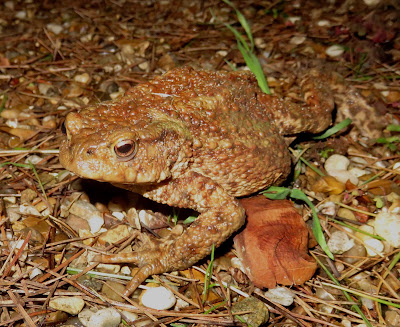Bumped into Lee Evans, over from Bucks, on the seawall who was trying to track down the black brant. It was tracked down between the Dabchicks and the caravan site saltmarsh, feeding with 50 brent geese just before the high tide. The black brant pictured here on the left with the broad white neck collar.
Other birds noted during the seawall walk included 6 little egrets, common snipe, 10 reed buntings, 20 skylarks, rock pipit, while little along the Channel as the incoming tide had already forced most waders off.
Also on Monday a sparrowhawk flew over the Firs Chase garden and 500 starlings circled over the nearby gardens late afternoon.
This obliging dunlin was feeding close to the bottom of the Reeveshall seawall at high tide by itself on Sunday 26th.
The high tide covered a good part of the saltmarsh along the Pyefleet on the windy Sunday. On the opposite side by Peewit Island, masses of waders and wildfowl rose into the air probably due to a passing raptor. Catching the eye in flight were 50 pintail which circled round with some flying off but 28 dropped down onto the water by the island.
Also noted were 4 red breasted mergansers, 100+ shelduck, 300 brent geese, 4 marsh harriers and 2 common buzzards.
Andy Field watched two red squirrels at Fishponds Wood in Shop Lane early afternoon on Sunday.
Seven common scoter were seen flying out of the Colne on Sunday by Jonathan Norgate, while a peregrine was seen by Chapmans Lane by Steve Entwistle. At the Youth Camp 40 fieldfare and 30 redwing were found by Andy, while at West Mersea the black brant was still by Coast Road and two great northern divers offshore.
A walk along the footpath between Meeting Lane and Shop Lane on Saturday 25th produced two common buzzards, fleeting glimpse of a peregrine over the fields, marsh harrier and 500 brent geese on Reeveshall while 3 Mediterranean gulls were with some black-headed gulls following a tractor seed-drilling.
The red squirrel has been paying daily visits to the nut feeder in the Firs Chase garden over the last week. Today it first visited as day broke at 6.30am spending fifteen minutes at the feeder. It was then spotted again just after mid-day briefly on the roof of the house before heading to a cherry-plum tree to feed on the new buds and young blossom for a couple of minutes.
While the red squirrel was feeding at the feeder early on Wednesday 22nd, it was seen to suddenly freeze and stop munching. When I looked more closely from the house, a fox was seen ambling over to the bottom of the tree and the squirrel watched nervously as it passed beneath it.
The first toad of the "spring" was seen crawling over the driveway in the Firs Chase garden in the evening of Saturday 25th.






















































